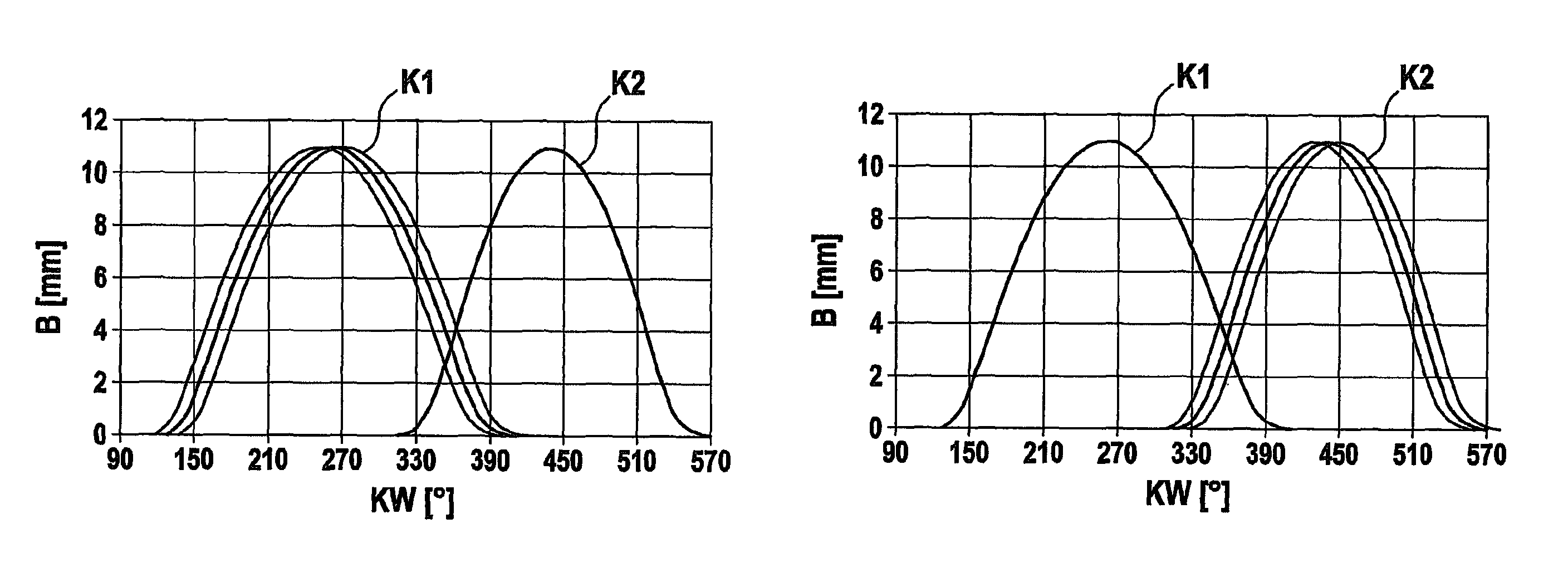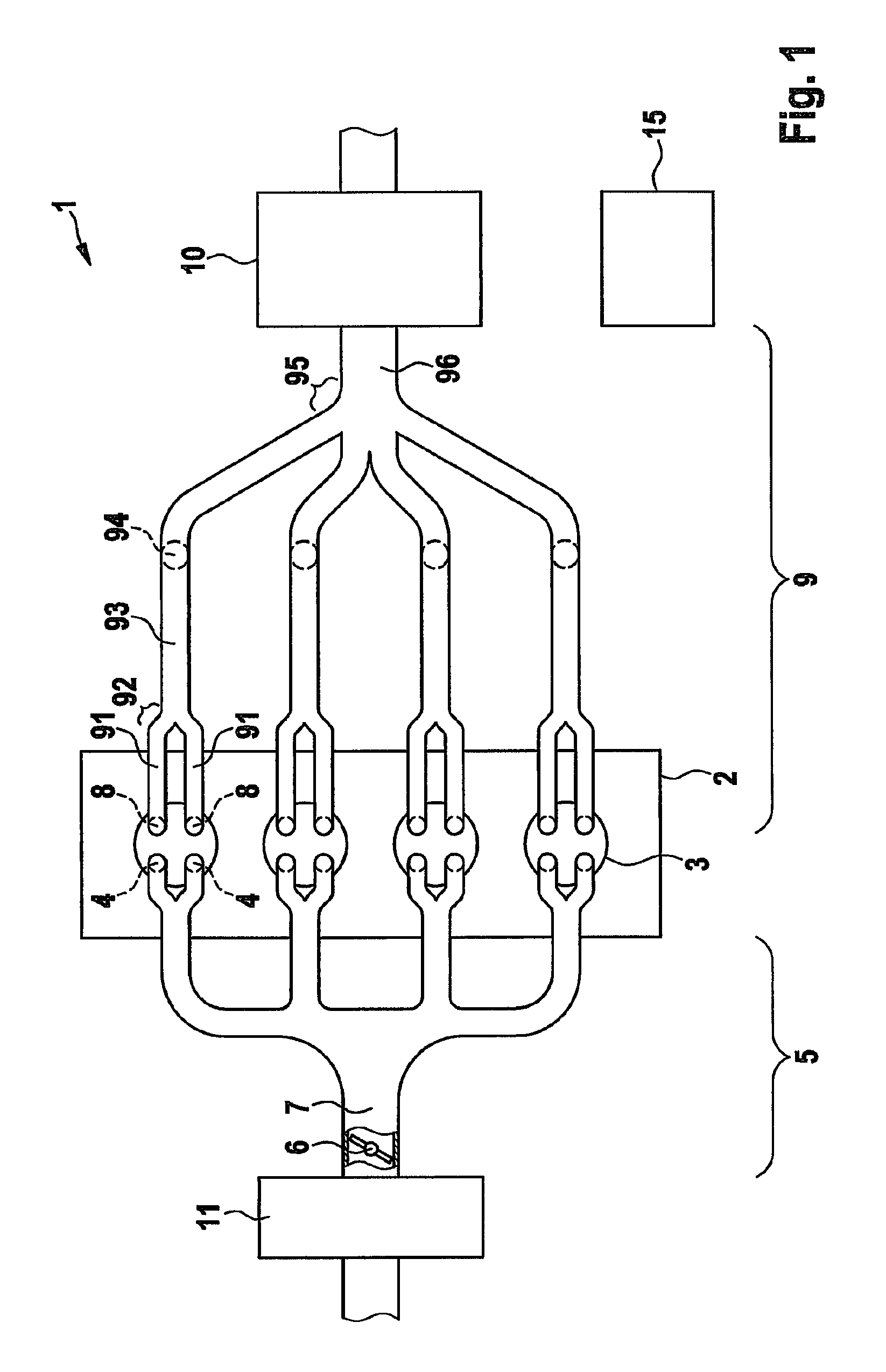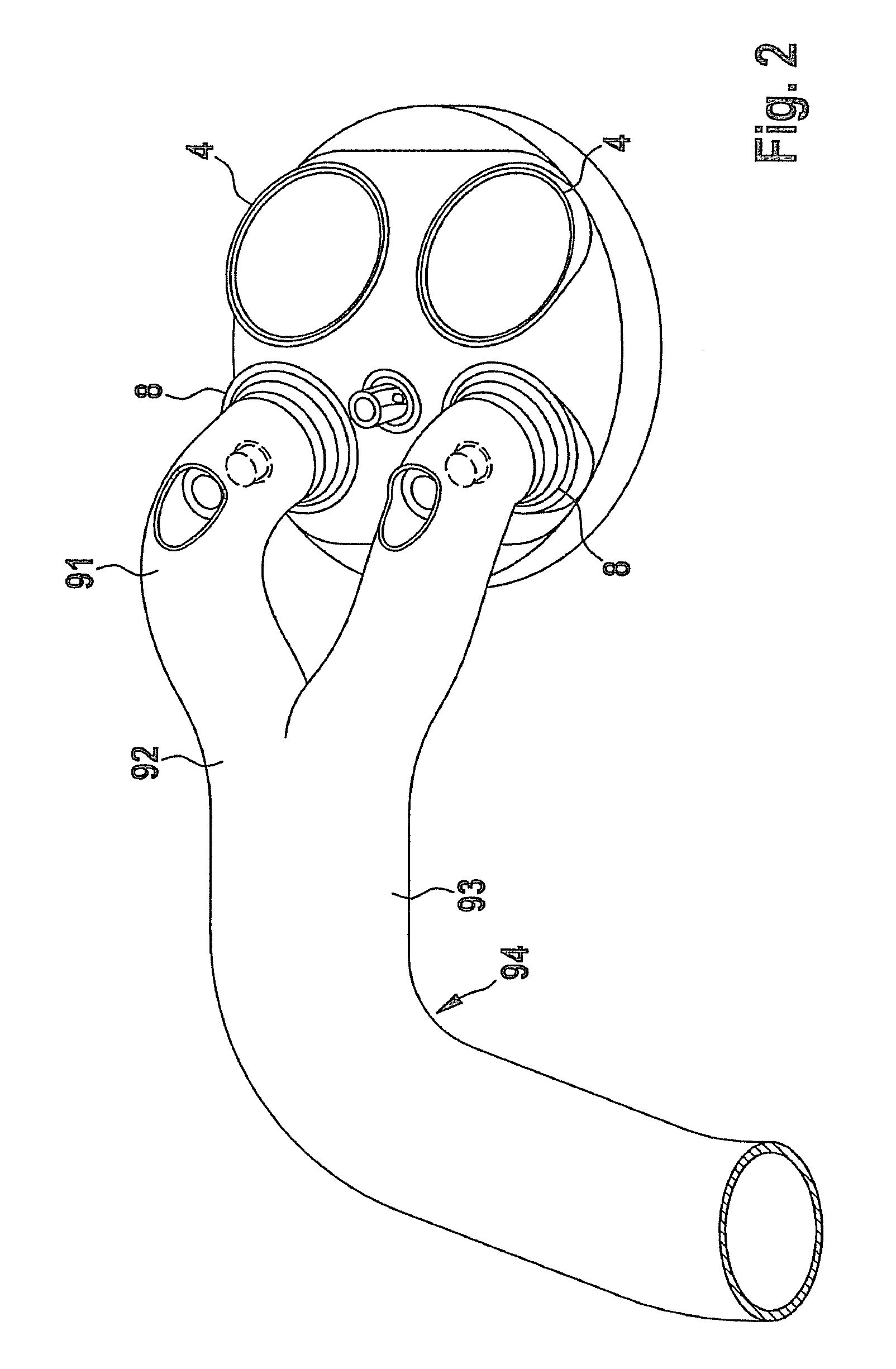Method and device for operating an internal combustion engine
a technology of internal combustion engine and combustion chamber, which is applied in the direction of machines/engines, output power, mechanical apparatus, etc., can solve the problems of limited maximum catalytic converter exotherm, etc., and achieve the effects of improving mixing, increasing post-reaction rate, and increasing the rate of reaction
- Summary
- Abstract
- Description
- Claims
- Application Information
AI Technical Summary
Benefits of technology
Problems solved by technology
Method used
Image
Examples
Embodiment Construction
[0031]FIG. 1 shows a schematic representation of an engine system 1 having an internal combustion engine 2 which in the depicted exemplary embodiment has four cylinders 3. The internal combustion engine is for example a spark-ignition engine. Cylinders 3 each have two intake valves 4 connected to an air supply system 5. Via air supply system 5, fresh air can be supplied to intake valves 4, which, corresponding to their controlling, admit the fresh air into a combustion chamber of the corresponding cylinder 3 as a function of the respective working stroke of cylinder 3.
[0032]Fuel is preferably supplied to cylinders 3 directly, via a corresponding injection valve (not shown). The air supply is set in air supply system 5 via a throttle valve 6, the position of throttle valve 6 specifying an intake pipe pressure in intake pipe segment 7. The intake pipe pressure determines the quantity of fresh air that flows or is suctioned into the combustion chamber of cylinder 3 when the correspondi...
PUM
 Login to View More
Login to View More Abstract
Description
Claims
Application Information
 Login to View More
Login to View More - R&D
- Intellectual Property
- Life Sciences
- Materials
- Tech Scout
- Unparalleled Data Quality
- Higher Quality Content
- 60% Fewer Hallucinations
Browse by: Latest US Patents, China's latest patents, Technical Efficacy Thesaurus, Application Domain, Technology Topic, Popular Technical Reports.
© 2025 PatSnap. All rights reserved.Legal|Privacy policy|Modern Slavery Act Transparency Statement|Sitemap|About US| Contact US: help@patsnap.com



